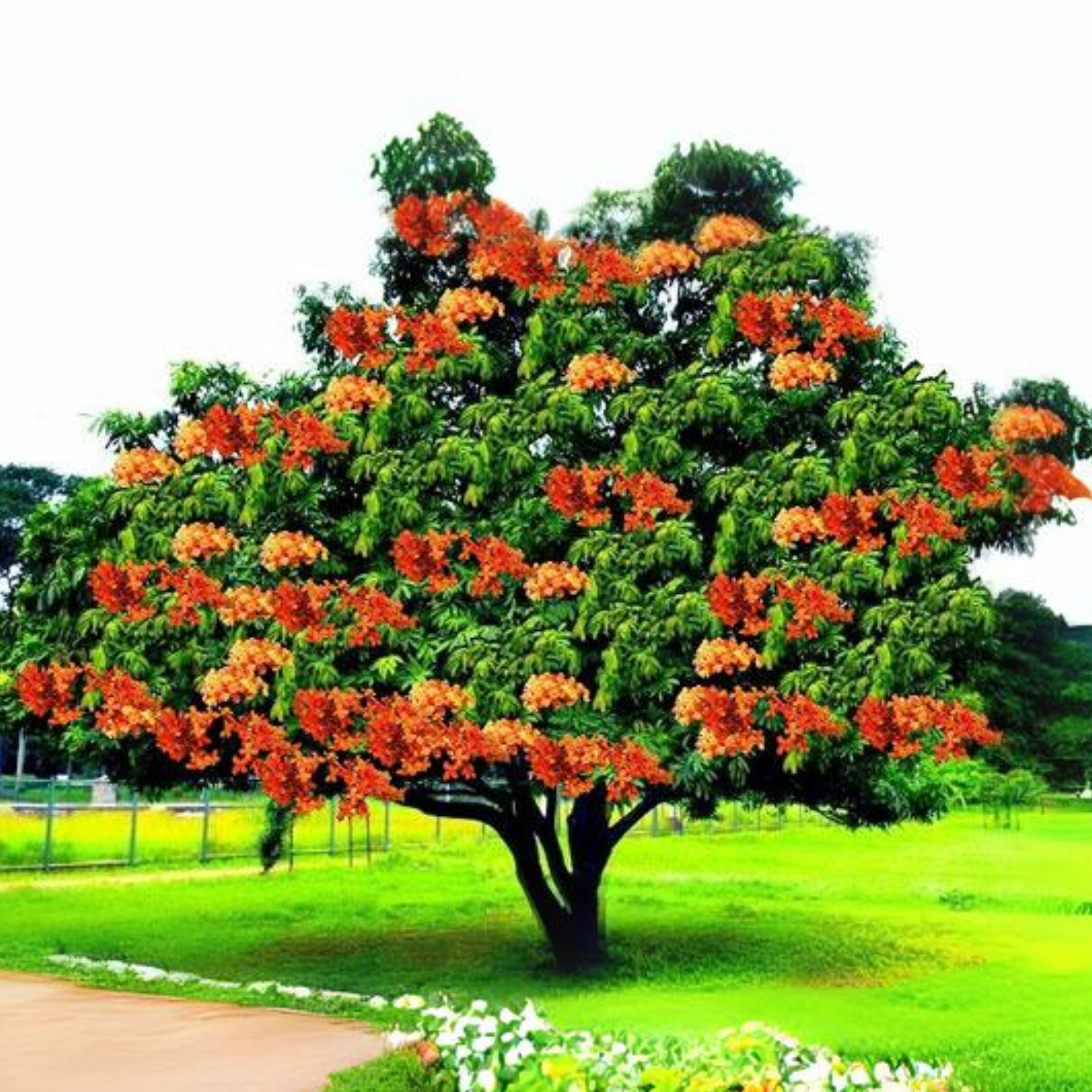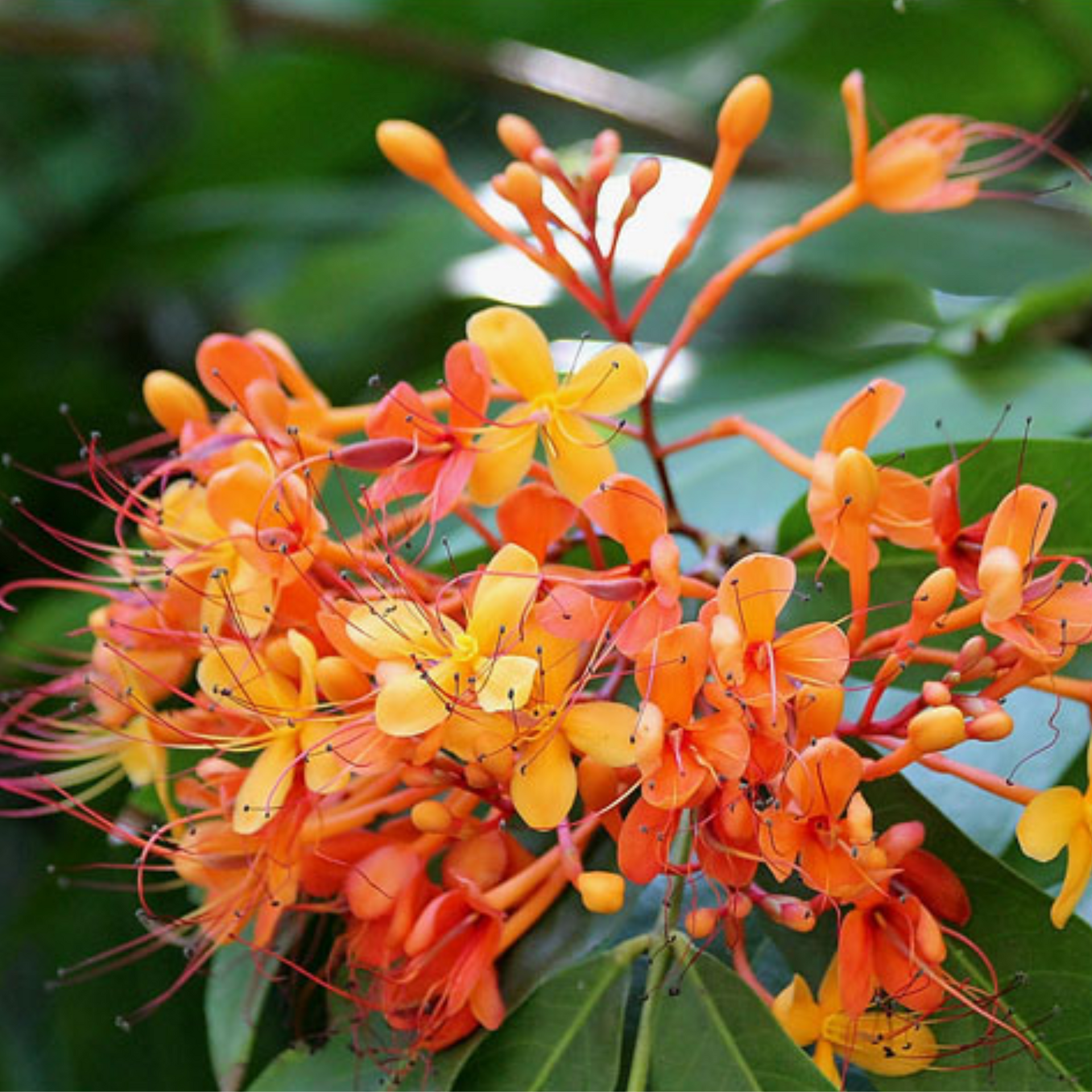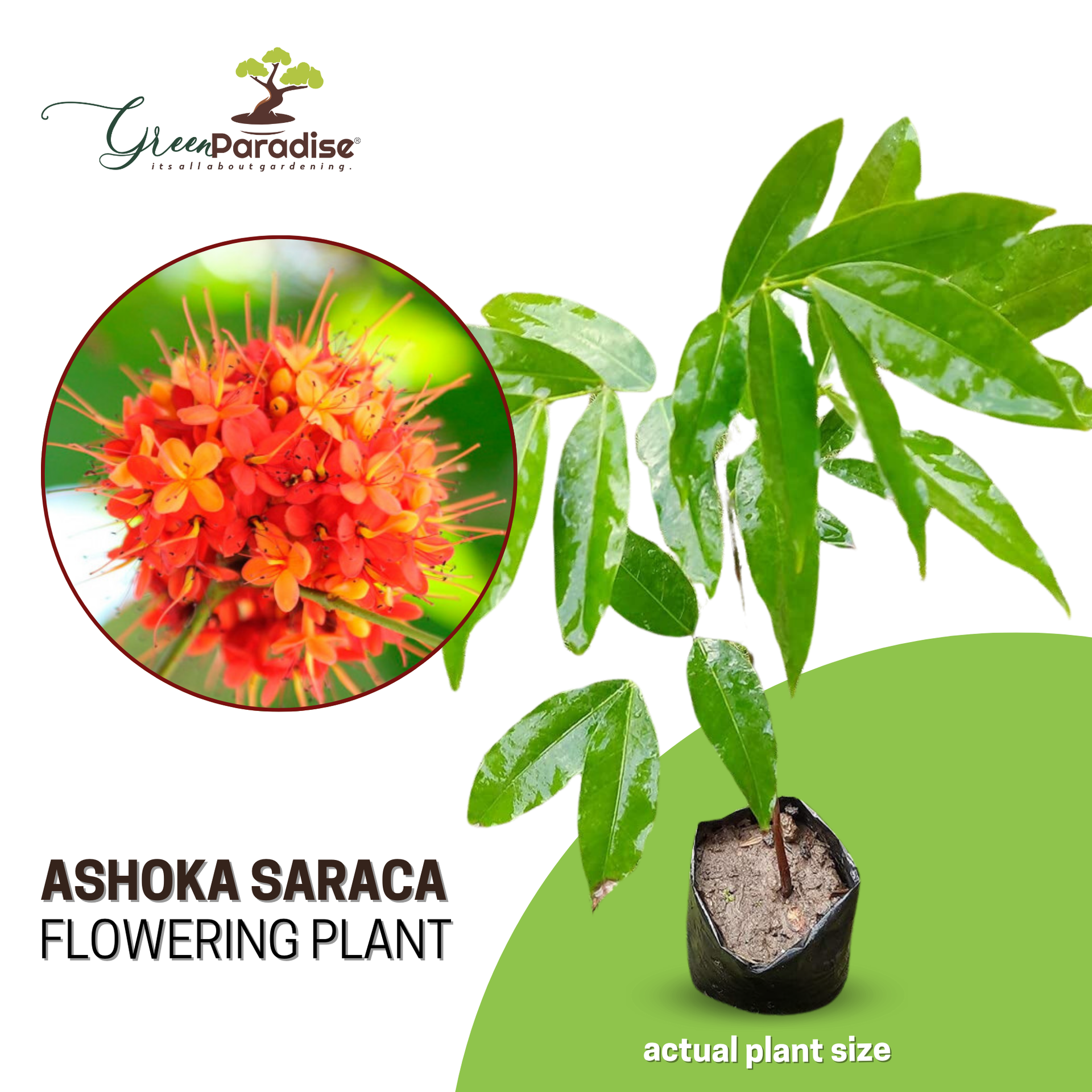



Green Paradise Offers Healthy Ashoka
Saraca Plant
About Ashoka Saraca Plant
The Ashoka Saraca plant, also known as Saraca indica or Ashoka tree, is a species of flowering tree native to the Indian subcontinent. It belongs to the Fabaceae family and is revered for its cultural, religious, and medicinal significance.
Here's some information about the Ashoka Saraca plant:
Appearance:
-
The Ashoka tree is a medium-sized evergreen tree that can grow to be 6-9 meters (20-30 feet) tall.
-
It has a straight trunk with a wide canopy of dense foliage.
-
The leaves are compound, pinnate, and dark green, with each leaflet being long and slender.
-
The tree produces fragrant, bright orange or yellow flowers in clusters.
Cultural Significance:
-
The Ashoka tree holds great importance in Indian mythology and religious traditions.
-
It is often associated with love, beauty, and fertility. In Hindu mythology,
-
it is considered sacred and is dedicated to the goddess Sita, symbolizing feminine energy and virtue.
-
The tree's name "Ashoka" translates to "sorrowless" or "without grief," reflecting its association with peace and serenity.
Medicinal Uses:
-
Various parts of the Ashoka Saraca plant, including the bark, leaves, flowers, and seeds, have been used in traditional Ayurvedic medicine for centuries.
-
The bark is particularly valued for its medicinal properties and is used to treat various gynecological disorders, including menstrual irregularities, uterine infections, and excessive bleeding.
-
It is believed to have uterine tonic and anti-inflammatory properties.
Other Uses:
-
The wood of the Ashoka tree is durable and is used in the construction of furniture and buildings.
-
The flowers are used in making garlands, and the tree's ornamental value makes it a popular choice in landscaping and gardens.
Cultivation:
-
The Ashoka Saraca plant prefers a tropical climate and is commonly found in India, Sri Lanka, and other parts of Southeast Asia.
-
It grows best in well-drained soil and can be grown in either full sun or partial shade.
-
It is relatively easy to propagate from seeds or stem cuttings.
Conservation Status:
-
While the Ashoka Saraca plant is not currently listed as endangered, its population has faced threats due to deforestation and habitat destruction.
-
Efforts are being made to conserve this culturally significant tree and promote its cultivation.
It's important to note that while the Ashoka Saraca plant has a long history of traditional use in Ayurvedic medicine, it's always recommended to consult with a qualified healthcare professional before using any herbal remedies for medical purposes.
How To Grow Ashoka Saraca Plant
The Ashoka Saraca (Saraca Ashoka) plant, also known as the Ashoka tree, is a popular ornamental tree native to the Indian subcontinent. It is revered for its beautiful, fragrant flowers and lush green foliage.
Here are some guidelines to help you grow an Ashoka Saraca plant:
Climate and sunlight:
-
Ashoka Saraca thrives in tropical and subtropical climates.
-
It requires full to partial sunlight, so choose a location that receives at least 4-6 hours of direct sunlight per day.
Soil requirements:
-
The plant prefers well-draining soil with a slightly acidic to neutral pH level.
-
It can tolerate a variety of soil types, including flaxen and earthy soils.
-
ensure the soil is rich in organic matter and has good drainage.
Propagation:
-
The Ashoka Saraca plant can be propagated through seeds, stem cuttings, or air layering.
-
Seeds are the most common method.
-
Soak the seeds in water overnight before sowing them in seed trays or pots filled with well-draining potting mix.
-
Keep the soil consistently moist until germination occurs, which may take several weeks.
Planting:
-
Once the seedlings are around 6-8 inches tall, transplant them into larger pots or directly into the ground.
-
Dig a hole slightly larger than the root ball and place the factory, icing the top of the root ball is position with the soil face.
-
Backfill the hole with soil, and gently indurate it around the roots.
-
Water thoroughly after planting.
Watering:
-
Provide regular watering to keep the soil moist but not waterlogged.
-
Water the factory deeply, allowing the water to access the root zone.
-
During hot and dry ages, increase the frequency of watering.
Fertilization:
-
Feed the Ashoka Saraca plant with a balanced, slow-release fertilizer during the growing season, following the package instructions.
-
Alternatively, you can use well-rotted organic compost or manure to nourish the plant.
-
Avoidover-fertilization, as it can lead to inordinate leafage growth and smaller flowers.
Pruning:
-
pares the factory to maintain its shape and size. Remove dead, damaged, or diseased branches and stems.
-
Lightly prune the canopy to promote bushier growth and improve flowering.
-
It's stylish to pare the factory after unfolding.
Pests and diseases:
-
Ashoka Saraca is generally resistant to pests and diseases.
-
Keep an eye out for common problems such as aphids, mealybugs, or fungal diseases. still, treat the factory with applicable organic or chemical controls, If necessary.
Mulching:
-
Apply a subcaste of organic mulch around the base of the factory to help conserve humidity, suppress weed growth, and regulate soil temperature.
-
Keep the mulch a many elevation down from the box to help rotting.
Winter care:
-
In areas where temperatures drop significantly, provide protection to the Ashoka Saraca plant during the winter.
-
Cover the plant with a frost cloth or move potted plants indoors to a warm location.
Remember to observe and respond to the specific needs of your Ashoka Saraca plant as it grows. With proper care and attention, it should flourish and reward you with its stunning beauty.
Ashoka Saraca Plant Benefits and Caring
Ashoka Saraca (Saraca Indica) is a popular tree in Ayurveda, known for its medicinal properties and ornamental value. It is native to the Indian subcontinent and is commonly found in India, Sri Lanka, and Nepal. The tree has various health benefits and requires specific care to thrive.
Here are some of the benefits and caring tips for Ashoka Saraca plants:
Benefits:
Menstrual Health:
-
Ashoka Saraca is highly valued for its ability to support female reproductive health.
-
It is often used to alleviate menstrual disorders, reduce menstrual pain, and regulate menstrual cycles.
Uterine Tonic:
-
The bark of Ashoka Saraca is considered an effective uterine tonic.
-
It is believed to strengthen the uterine muscles and help in postpartum recovery.
Anti-inflammatory Properties:
-
The plant possesses anti-inflammatory properties that can help in reducing inflammation and swelling.
Wound Healing:
-
Ashoka Saraca has wound-healing properties and is used in traditional medicine for treating various skin ailments and promoting the healing of wounds.
Anti-diabetic Effects:
-
Some studies suggest that Ashoka Saraca may have anti-diabetic properties, helping to regulate blood sugar levels.
Caring Tips:
Sunlight:
-
Ashoka Saraca prefers partial to full sunlight. Ensure that it receives at least 4-6 hours of direct sunlight each day.
Soil:
-
The plant thrives in well-draining soil that is rich in organic matter.
-
A mix of garden soil and compost or well-rotted manure works well.
Watering:
-
Water the plant on a regular basis to keep the soil evenly moist but not soggy.
-
Allow the soil's top layer to dry slightly between waterings.
Temperature:
-
Ashoka Saraca prefers warm climates and is not frost-tolerant.
-
It grows well in temperatures between 15°C (59°F) and 35°C (95°F).
Pruning:
-
Regular pruning helps maintain the shape and size of the plant.
-
Prune any dead or diseased branches and promote healthy growth by removing weak or overcrowded branches.
Fertilization:
-
Feed the plant with a balanced organic fertilizer during the growing season to provide essential nutrients.
-
Follow the manufacturer's instructions for application.
Pests and Diseases:
-
Ashoka Saraca is generally resistant to pests and diseases.
-
However, keep an eye out for common issues like aphids, mealybugs, or powdery mildew. Treat any infestations promptly using appropriate organic remedies.
Transplantation:
-
If necessary, transplant the Ashoka Saraca tree during the early spring season.
-
Ensure that the new location has suitable soil conditions and adequate space for the tree to grow.
Remember to consult with local gardening experts or nursery professionals for specific care instructions based on your location and climate.






